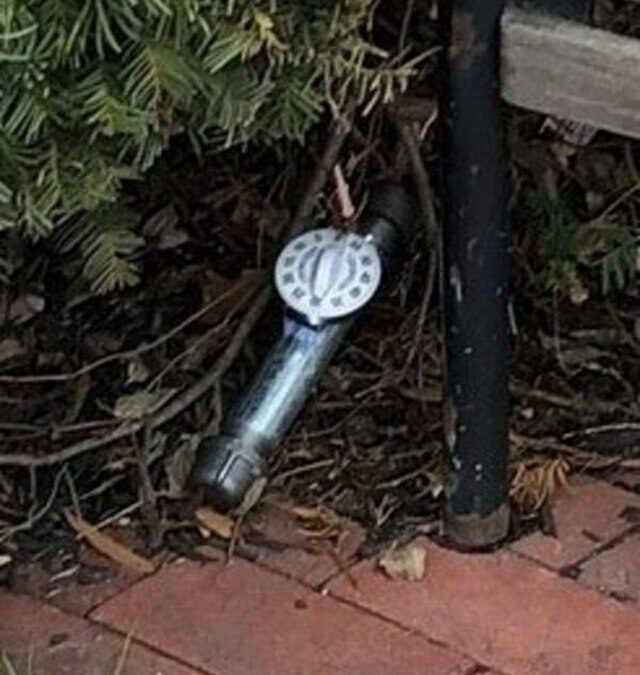
In a move that further underscores the Trump administration’s hostility to regulatory programs, the Environmental Protection Agency announced plans to eliminate the Energy Star program, a longstanding federal initiative that has guided consumers toward more energy-efficient appliances for over three decades.
The decision, disclosed at a May 5 all-hands meeting of the EPA’s Office of Atmospheric Protection, would not only scrap the blue-label program but dissolve the office itself as part of a broader agency reorganization. Internal documents obtained by The Washington Post confirmed the move is consistent with the administration’s effort to unwind federal efficiency standards it deems excessive.
Launched in 1992, Energy Star has become synonymous with cost-saving appliances—from refrigerators to dishwashers—bearing a label trusted by millions. A 2023 federal report credited the program with slashing more than $500 billion in energy costs and preventing carbon emissions on par with taking nearly one billion cars off the road. Yet critics within the administration call it regulatory overreach—an emblem of what they view as an intrusive climate bureaucracy.
That position has sparked backlash across the energy policy spectrum, reported the newspaper. Ben Evans, federal legislative director at the U.S. Green Building Council, called the decision “incredibly shortsighted,” pointing to the program’s modest $32 million cost relative to its estimated $40 billion in annual savings for consumers and businesses. He also warned of collateral damage to federal tax incentives—such as the $2,500 credit for builders of Energy Star-certified homes—that may be nullified if the program is dismantled.
But some experts argue the program’s advertised savings don’t hold up under scrutiny. A major study conducted in Houston compared the utility bills of thousands of Energy Star-certified homes with similar non-certified homes and found the savings far below the promised range. On average, the so-called high-efficiency homes used less than 2% less electricity and just under 7% less natural gas—translating to an annual savings of about $81, not the $200 to $400 commonly claimed. Researchers noted that many of these homes barely exceeded local building codes, with insulation and performance metrics falling well short of the program’s marketing.
Administration officials justify the move by arguing the EPA’s efficiency initiatives burden industry and distort the free market. A partial budget blueprint also proposes deep cuts to the Department of Energy’s Office of Energy Efficiency and Renewable Energy. An EPA spokesperson described the overhaul as part of “organizational improvements,” but declined to explain how the agency would maintain consumer energy savings absent Energy Star.
Predictably, the administration has found support among critics of environmental regulation. Steve Milloy, a longtime opponent of climate mandates and founder of JunkScience.com, dismissed Energy Star’s reported savings as “bureaucratic fantasy.” He charged that efficiency standards have been used to advance a “green agenda” while inflating product prices. “This is like gas mileage mandates all over again—higher costs, lower performance, no benefit to the consumer,” Milloy wrote on Twitter.
No, EPA's Energy Star program has not saved consumers $500 billion since 1992:
1. The $500 billion is just a bureaucratic fantasy guesstimate based on zero real-world/actual use data.
2. The reality is that energy efficiency standards — like gas mileage standards — have been… pic.twitter.com/Z99klGkW5r
— Steve Milloy (@JunkScience) May 7, 2025
Milloy’s criticism taps into growing discontent among consumers frustrated with appliances that underperform in the name of efficiency, according to experts. Some argue that modern washers and dishwashers—engineered to meet Energy Star thresholds—often leave clothes and dishes inadequately cleaned, forcing repeat cycles and shortening product lifespans. Far from helping the environment, they say, the regulations have encouraged a throwaway culture.
Despite that sentiment, Energy Star has historically attracted bipartisan backing. Moderate Republicans like Sen. Lisa Murkowski of Alaska have long supported the program as a way to reduce utility bills. But Murkowski declined to comment on the current proposal when asked by reporters on May 6. If Energy Star is axed, it could imperil popular consumer tax credits—up to $3,200 for home efficiency upgrades—that congressional Republicans are already eyeing for repeal under the 2022 climate law.
Seeking to head off the backlash, the Association of Home Appliance Manufacturers has floated a compromise: moving Energy Star to the Department of Energy. “AHAM supports continuing a streamlined version of Energy Star, managed through DOE,” a spokesman noted to Fast Company.
President Trump’s distaste for efficiency mandates is well documented. Just last month, he signed an executive order fixing our showerheads so they actually work, vowing to “make America’s showers great again.” The Energy Star rollback follows that same populist script—but legal challenges may complicate the path forward. Because the program was created by statute, any effort to dismantle it without congressional approval could run afoul of federal law.
[Read More: Pam Bondi Explains The Delay In The Epstein Files]











